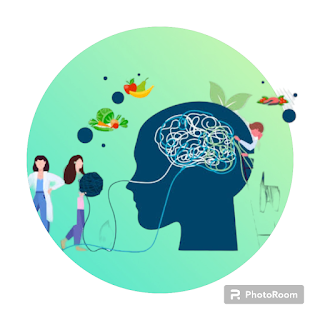Unleashing Creativity: The Art and Science of Brainstorming
Introduction:
Brainstorming is a powerful tool for generating ideas, solving problems, and fostering creativity. Whether you're a writer, an entrepreneur, or a team leader, mastering the art of brainstorming can unlock new possibilities and drive innovation. In this blog post, we'll explore the psychology behind brainstorming, practical tips for effective sessions, and how to cultivate a culture of creativity within teams.
Understanding the Psychology of Brainstorming:
At its core, brainstorming is about tapping into the collective intelligence and creativity of a group. Psychologically, it leverages principles such as divergent thinking, where individuals explore a wide range of possible solutions, and convergent thinking, where ideas are refined and evaluated.
Divergent thinking encourages participants to generate as many ideas as possible, without judgment or criticism. This fosters a free-flowing exchange of thoughts and sparks creativity. However, it's essential to create a supportive environment where everyone feels comfortable sharing their ideas, no matter how wild or unconventional they may seem.
Convergent thinking comes into play once the brainstorming session is over. This is where ideas are analyzed, refined, and prioritized based on criteria such as feasibility, impact, and alignment with goals. It's important to strike a balance between exploration and evaluation to ensure that the most promising ideas are identified and developed further.
Practical Tips for Effective Brainstorming:
1. Define clear objectives: Start by outlining the goals of the brainstorming session. Whether you're seeking solutions to a specific problem or generating ideas for a new project, clarity around objectives will guide the discussion and keep participants focused.
2. Create a conducive environment: Choose a comfortable and distraction-free space for the brainstorming session. Consider factors such as lighting, seating arrangements, and access to whiteboards or flip charts to facilitate idea generation and collaboration.
3. Encourage diversity: Bring together individuals with different backgrounds, perspectives, and skill sets. Diversity sparks creativity by introducing a variety of viewpoints and approaches to problem-solving. Encourage active participation from all members and ensure that everyone has an equal opportunity to contribute.
4. Set ground rules: Establish guidelines for the brainstorming session, such as refraining from criticism, building on each other's ideas, and staying focused on the topic at hand. Encourage participants to suspend judgment and embrace the spirit of exploration and experimentation.
5. Use facilitation techniques: Employ techniques such as mind mapping, role-playing, or structured brainstorming exercises to stimulate creativity and foster collaboration. Experiment with different approaches to keep the energy level high and spark new insights.
6. Capture ideas effectively: Use tools such as whiteboards, sticky notes, or digital collaboration platforms to capture and organize ideas as they emerge. Encourage participants to write down their thoughts individually before sharing them with the group to ensure a diverse range of perspectives.
7. Build on the momentum: Once the brainstorming session is complete, don't let the momentum fade away. Take immediate action to prioritize and develop the most promising ideas. Assign tasks, set deadlines, and establish accountability to ensure that ideas are translated into tangible outcomes.
Cultivating a Culture of Creativity:
Beyond individual brainstorming sessions, cultivating a culture of creativity within teams and organizations is essential for sustained innovation. Here are some strategies to foster a creative environment:
1. Lead by example: Demonstrate a willingness to embrace new ideas, take risks, and challenge the status quo. Encourage open communication and collaboration, and recognize and celebrate creativity and innovation.
2. Provide resources and support: Invest in training, tools, and resources to empower employees to unleash their creativity. Create opportunities for cross-functional collaboration and learning, and encourage experimentation and exploration.
3. Foster psychological safety: Create a safe and inclusive environment where individuals feel comfortable sharing their ideas, taking risks, and expressing themselves authentically. Encourage constructive feedback and address any barriers or biases that may inhibit creativity.
4. Celebrate successes and learn from failures: Acknowledge and celebrate successes, whether they're big or small, and recognize the efforts of individuals and teams. At the same time, embrace failure as a natural part of the creative process and encourage a growth mindset focused on learning and continuous improvement.
Conclusion:
Brainstorming is a powerful tool for unlocking creativity, generating ideas, and driving innovation. By understanding the psychology behind brainstorming, implementing practical tips for effective sessions, and cultivating a culture of creativity within teams and organizations, you can unleash the full potential of your collective intelligence and achieve breakthrough results. Embrace the art and science of brainstorming, and watch as new possibilities unfold before your eyes.



Comments
Post a Comment